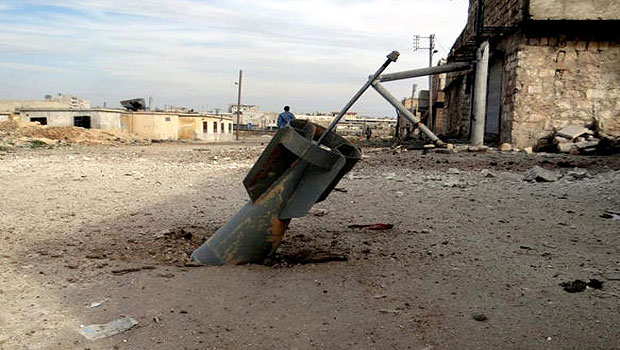The issue of extremist groups in the Syrian revolution has become like a problematic ailment where the patient avoids discovering the extent of its severity, and declines to begin the treatment phase. In fact, he avoids even talking about it or being reminded of it. Yet two years on from the outbreak of the brave Syrian revolution, its power centers have effectively been divided in two; the political opposition based abroad and the revolutionary opposition on the ground. This is a very complex issue and we must talk about it openly.
I realize that in the current phase of conflict against the Assad regime and its fierce ally Iran, the focus has been on uniting all arrows in the direction of this sectarian duo in order to topple the regime and then break the back of Iranian influence in the region. However, this does not prevent us from taking two parallel tracks, one that supports the efforts of the revolution financially, militarily, and logistically, in order to achieve its objectives, and a second to examine the complex map of the Syrian opposition in all its guises, especially the extremist groups that adhere to Al-Qaeda or at least share ideological traits with it. This form of early treatment would greatly reduce the complexity of the transfer of power after the collapse of the Assad regime, with all indications on the ground suggesting that this collapse is inevitable, even if it takes a long time. We cannot grope around this issue, rather we must talk about it frankly and transparently and this stage. It is not right to skirt around “extremist” revolutionary elements that could pose a threat to the revolution itself after the fall of the regime.
The Syrian revolution’s recent phase—with the military victories, the capturing of cities and airports, and the political achievements including international recognition for the Syrian opposition—resembles to a large extent the stage before the fall of the communist regime in Afghanistan. One of the most prominent similarities between the two cases is the reluctance to address the issue of extremism, avoiding any talk about the deep contrasts between opposition factions while victories are being achieved and before the regime has fallen.
In Afghanistan, those who warned of the potential dangers after the fall of the communist regime were considered weak and poisonous influences in the eyes of the Mujahedeen. They were accused of taking cheap shots at the Afghan jihad movement and undermining its achievements, and in some cases they were even labeled as traitors. However, with deep regret, the days following the fall of Kabul proved them right.
The security situation in Afghanistan deteriorated—in terms of the number of victims and the massive destruction—until a “shining light” emerged in the form of the Taliban, exploiting the weariness of the Afghans and their dissatisfaction towards the Mujahedeen who had exhausted the country’s resources.
Whether we like it or not, we can expect a difficult and very complicated situation in Syria after the fall of the Assad regime. It is no exaggeration to say that the map of the Syrian revolution is more complicated than the Afghani jihad of the 1980s. In the latter case, Islamic factions formed the overwhelming proportion of the Afghan opposition, whereas in the Syrian case there are liberal forces influencing the political scene, while the revolutionary forces on the ground are formed mainly of Islamic factions with diverse ideologies. Within these factions, some do not even recognize other armed revolutionary movements, so how do they view the political opposition, in which both liberals and secularists are active?
